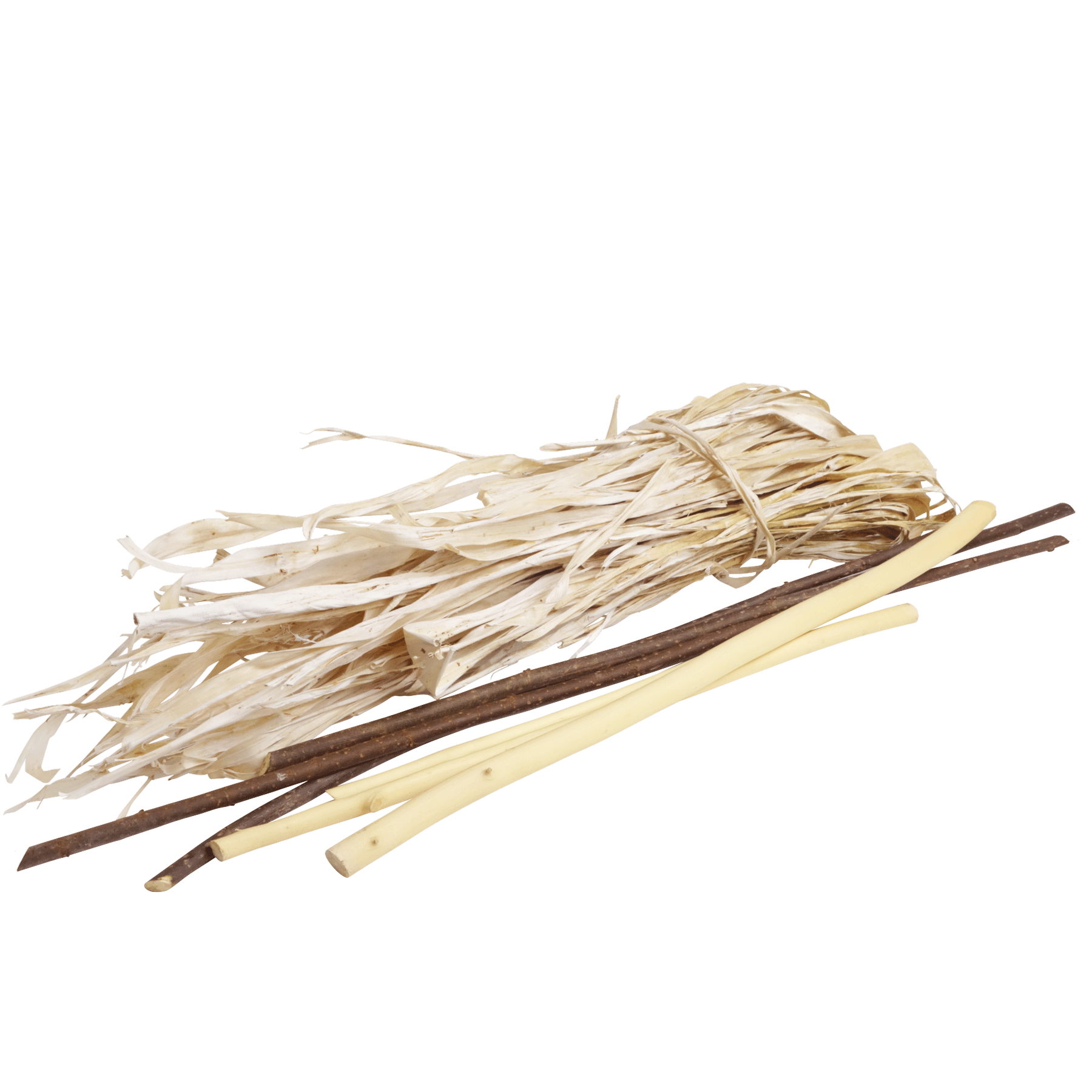- 材の名前
- kozo
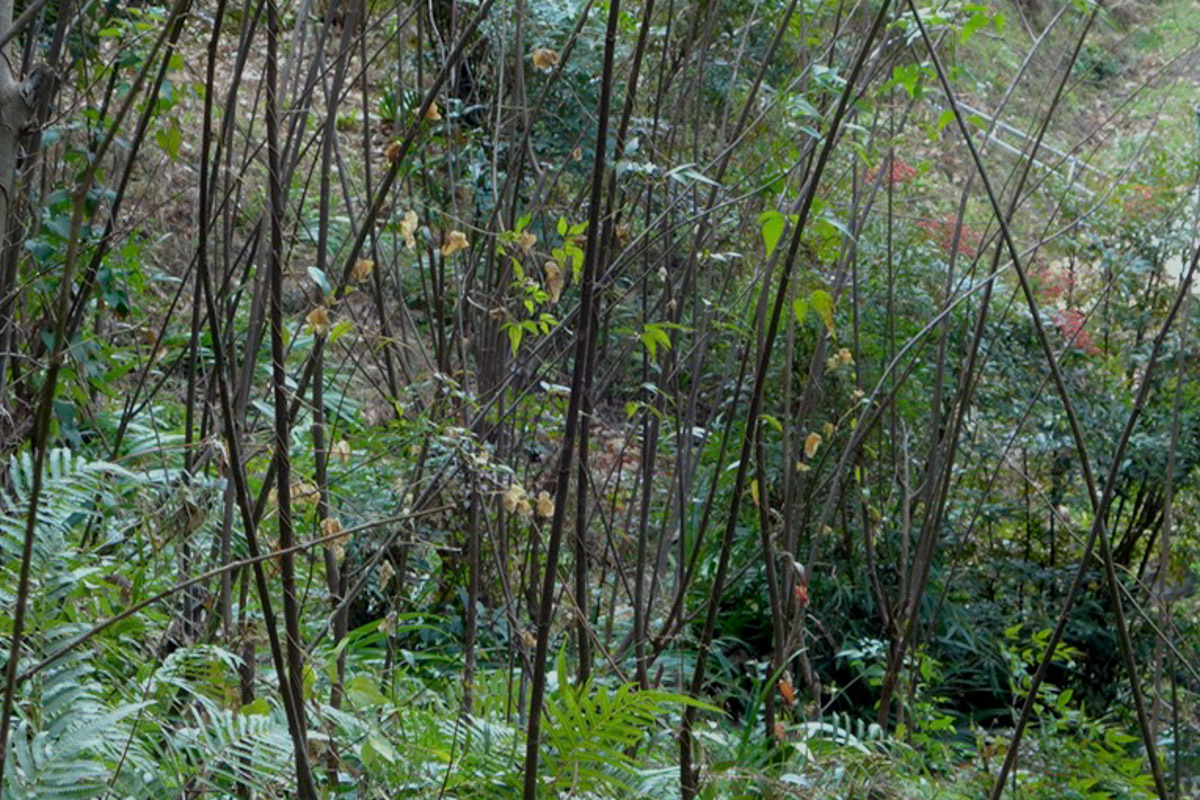
Kozo is cut every winter and grows to 2-3 meters per year.
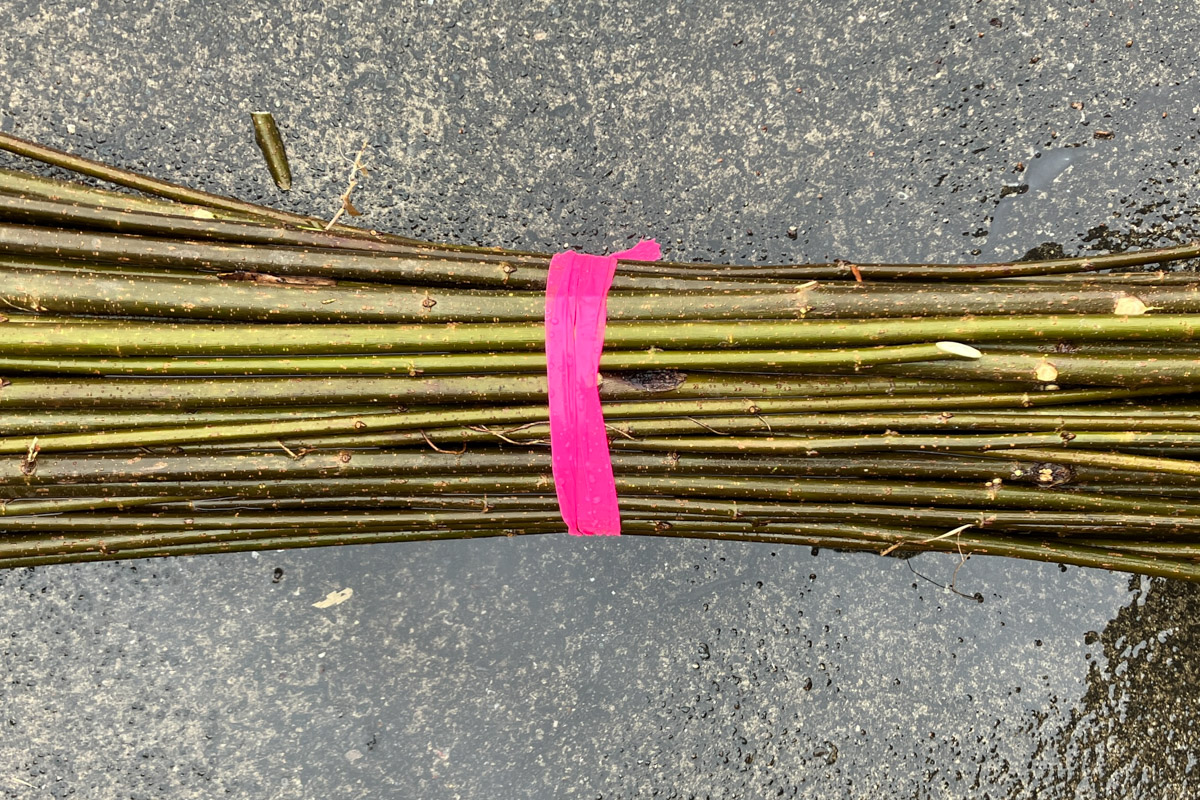
Aoso
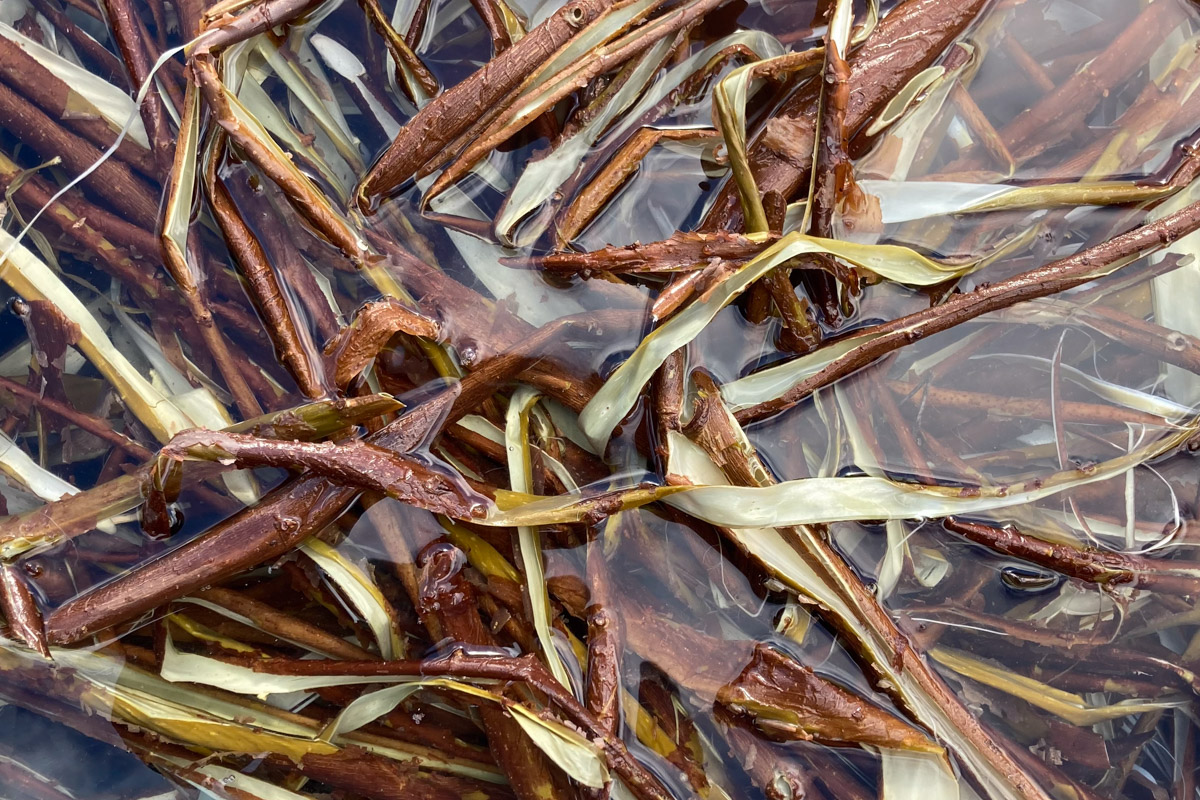
Akaso
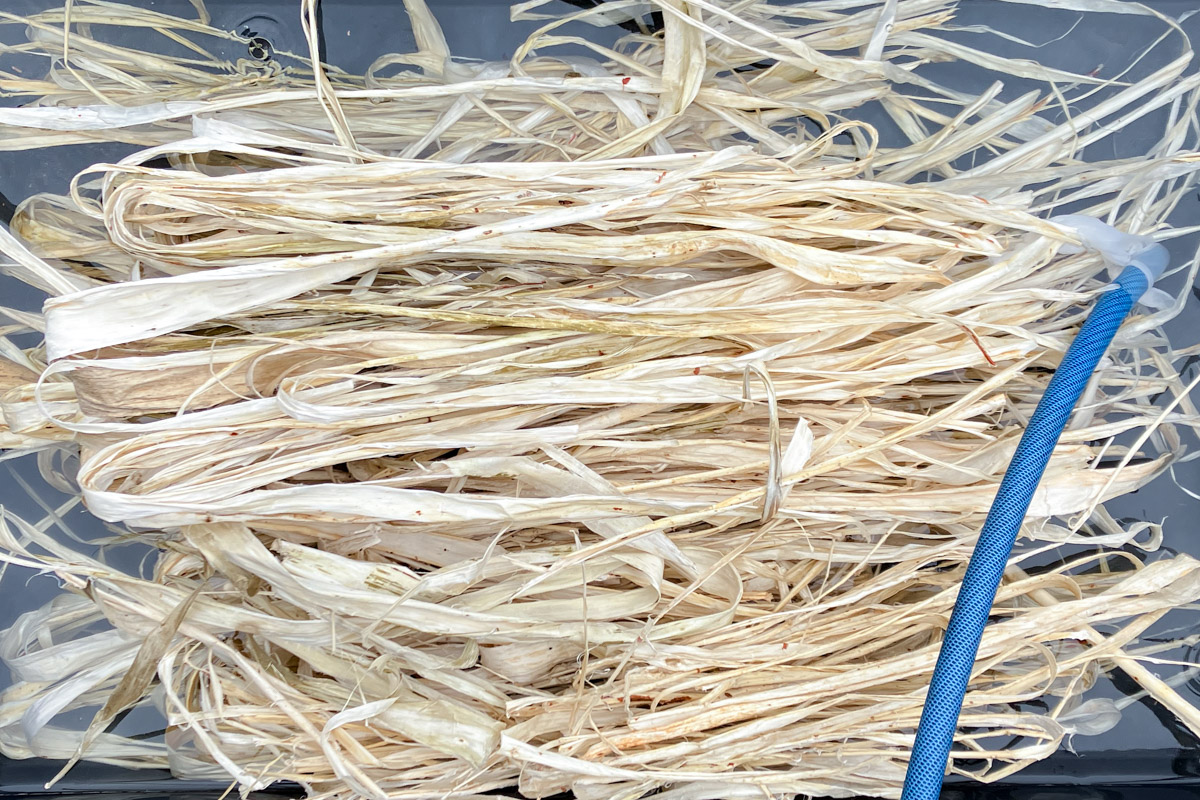
Kozo after getting rid of black bark
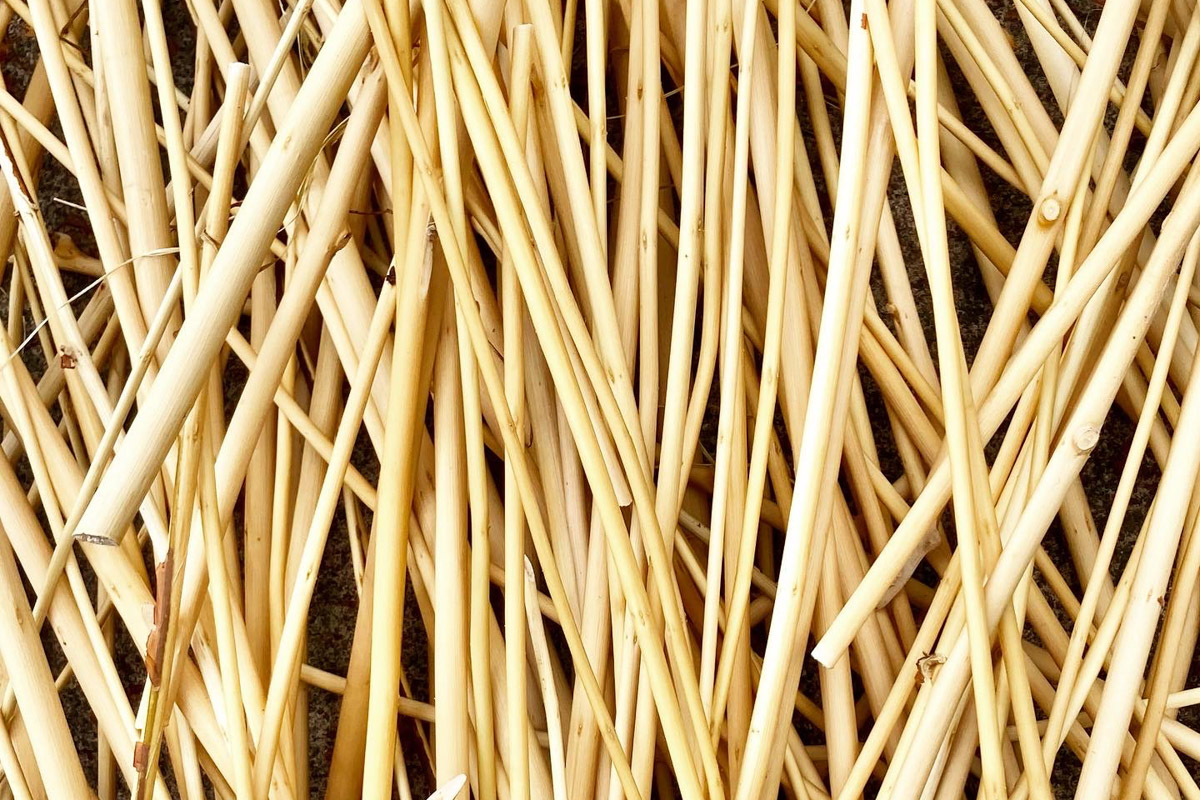
Wood part of kozo
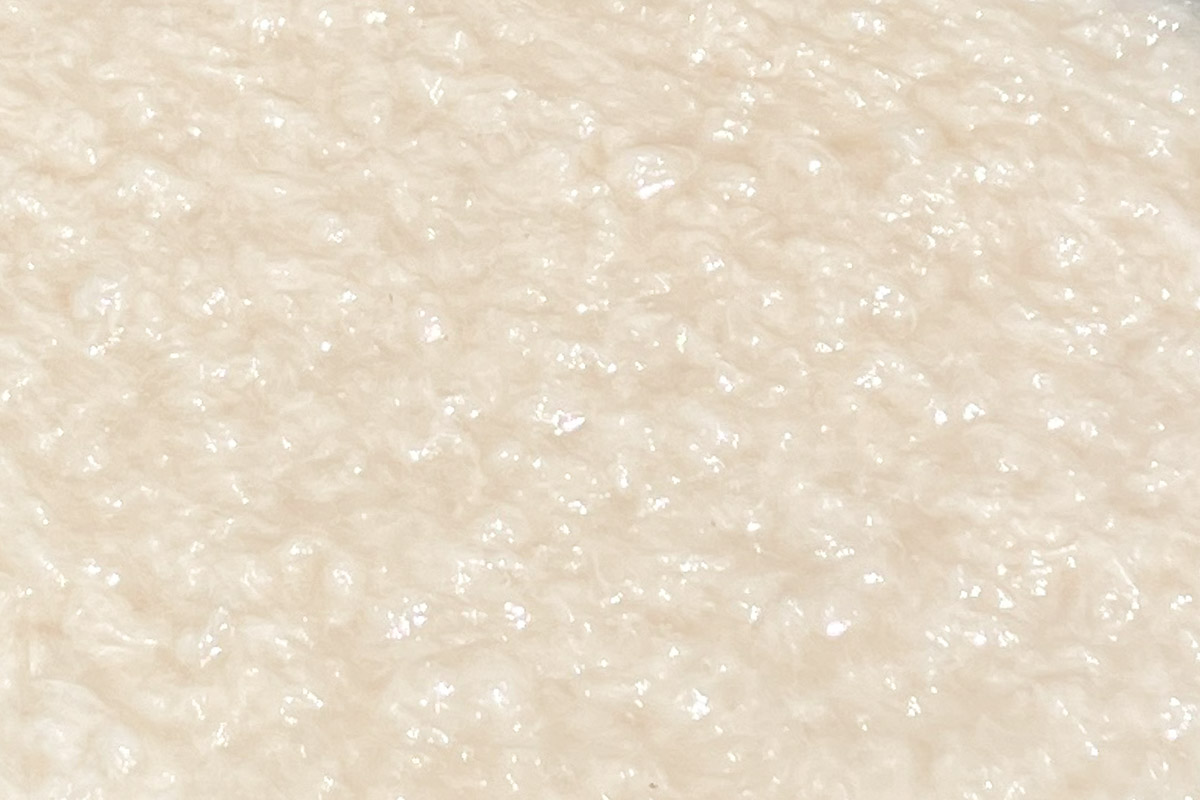
Kozo processed into fiber
Kozo (paper mulberry) grows well in semi-shaded areas facing people’s houses and roads. The fibers are so long and tough that they wrap around brush cutters, and the vines run through the kozo and get entangled in trees, making them a local nuisance and a target for mowing. Many kozo grow wild behind our studio and are harvested every winter, and the tough bark is used to make paper.
The bark is divided into three layers: black bark (the outermost black part), white bark (the white part used to make paper), and ama (the thin green part between the black and white bark). The bark of the kozo around my house is reddish, while that of my neighbor’s is bluish. They can be distinguished from akaso and aoso. To make white paper, the black bark must be removed, and akaso tends to be easier to process because the black bark peels off more easily. Some regions leave the ama-bark on the paper while others remove it completely, which affects the whiteness of the finished paper.
The wood part is white and light, and is often used for kindling because it catches fire easily. Care must be taken when using the wood as lumber because fungus can easily grow. We are exploring ways to preserve and utilize the wood and its parts as well.

